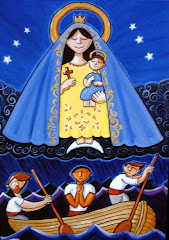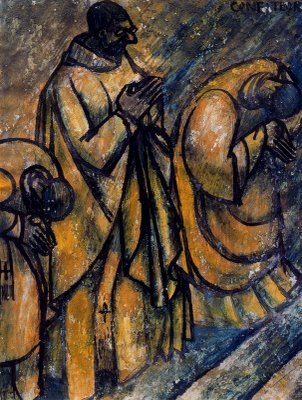 The Sixth way
The Sixth way
Saint Dominic, was also seen to pray standing erect with his hands and arms outstretched forcefully in the form of a cross. He prayed in this way when God, through his supplications, raised to life the boy Napoleon in the sacristy of the Church of Saint Sixtus in Rome, and when he was raised from the ground at the celebration of Mass, as the good and holy Sister Cecilia, who was present with many other people and saw him, narrates. He was like Elias who stretched himself out and lay upon the widow's son when he raised him to life.
In a similar manner he prayed near Toulouse when he delivered the group of English pilgrims from danger of drowning in the river. Our Lord prayed thus while hanging on the cross, that is, with his hands and arms extended and "with a loud cry and tears ... he was heard because of his reverent submission" [Heb. 5:7].
In a grave and mature manner, he would slowly pronounce the words in the Psalter which mention this way of prayer. He used to say attentively: "O Lord, the God of my salvation: I have cried in the day and in the night before thee, all the day I have cried to thee, O Lord: I stretched out my hands to thee" (Ps. 87:2-10). Then he would add: "Hear, O Lord, my prayer give ear to my supplication in thy truth . . ." He would continue "I stretched forth my hands to thee . . . Hear me speedily, O Lord" (Ps. 142:1-7).
This manner of prayer would help devout souls to appreciate more easily his great zeal and wisdom in praying thus. This is true whether, in doing so, he wished to move God in some wonderful manner through his prayer or whether he felt through some interior inspiration that God was to move him to seek some singular grace for himself or his neighbor.
 January 1st.
January 1st.












